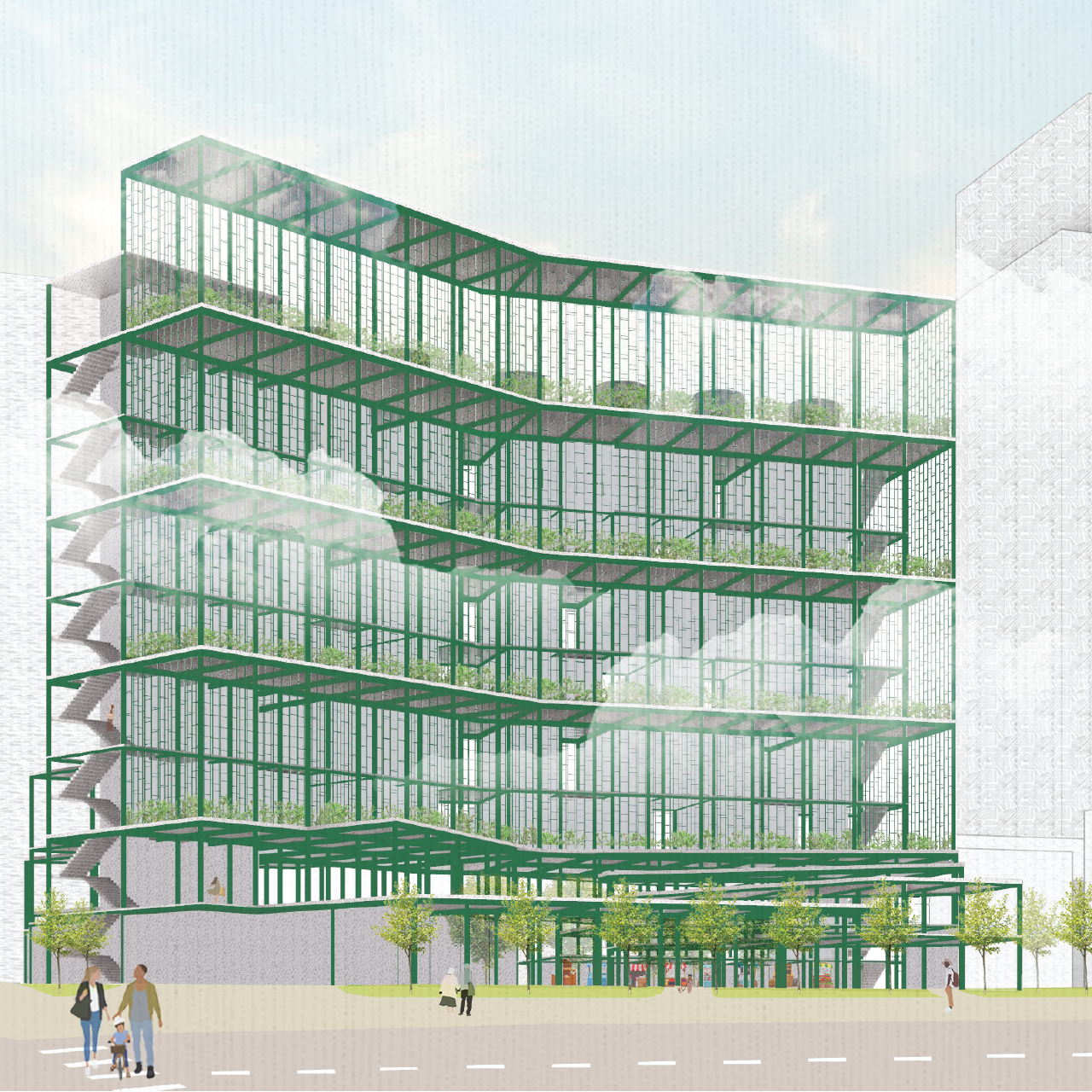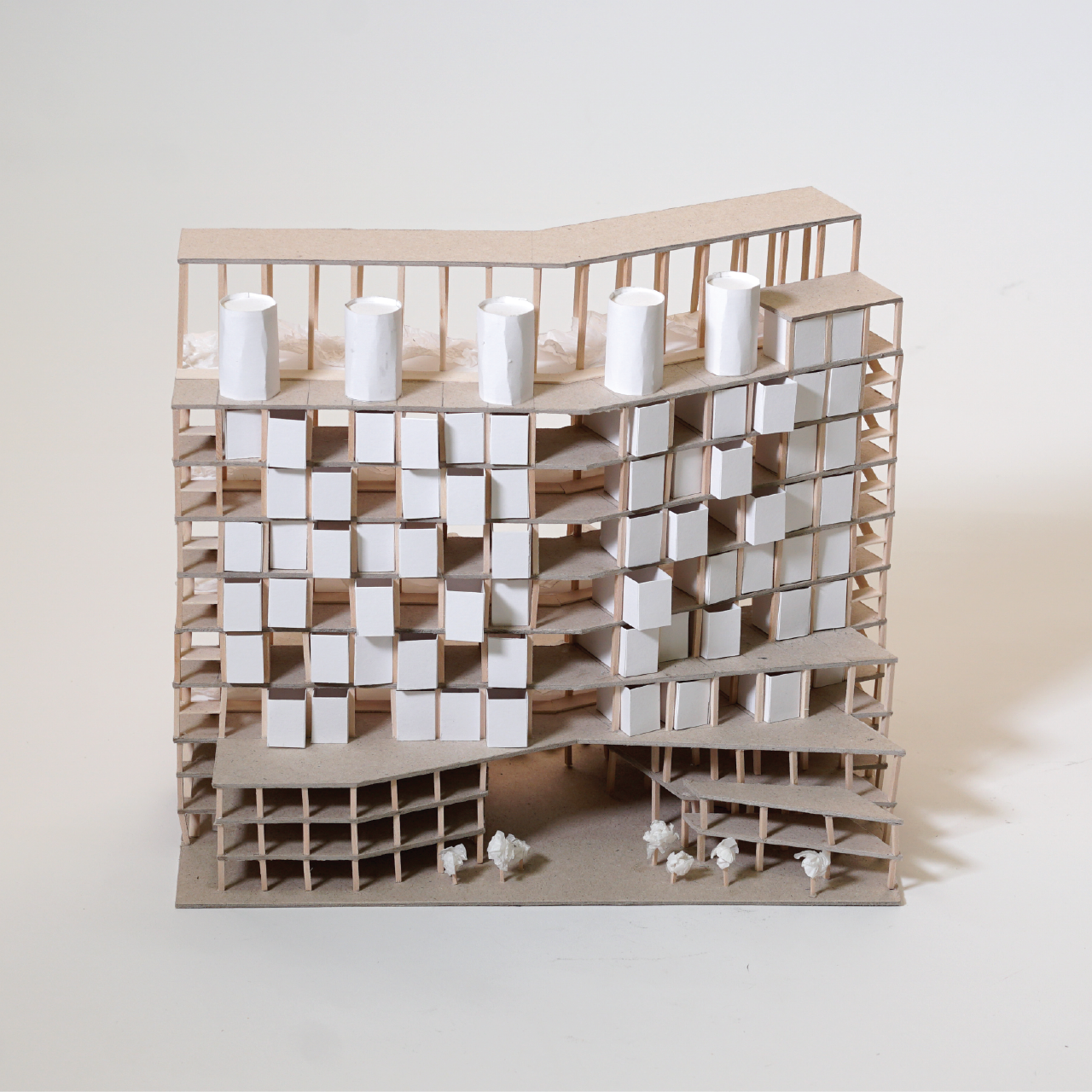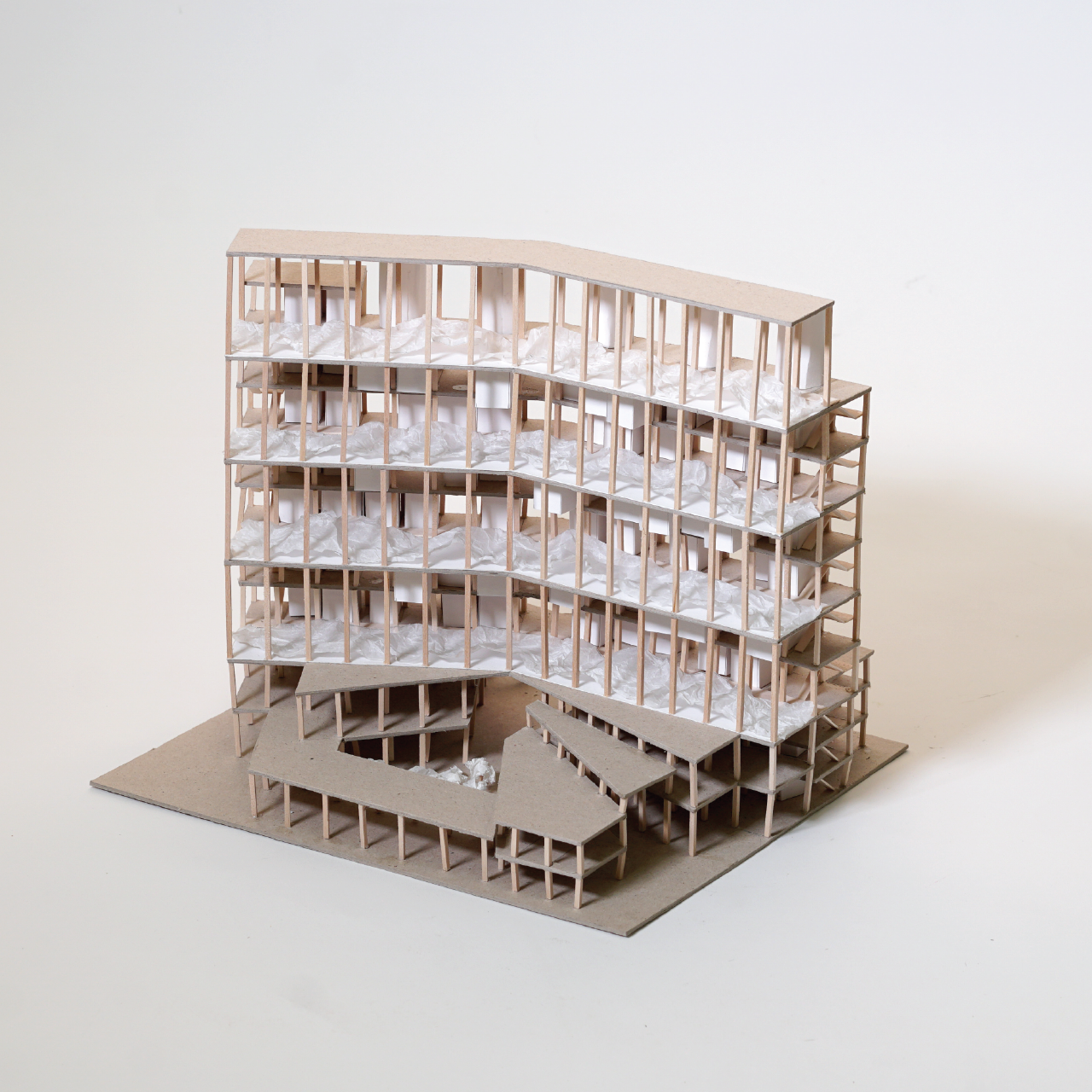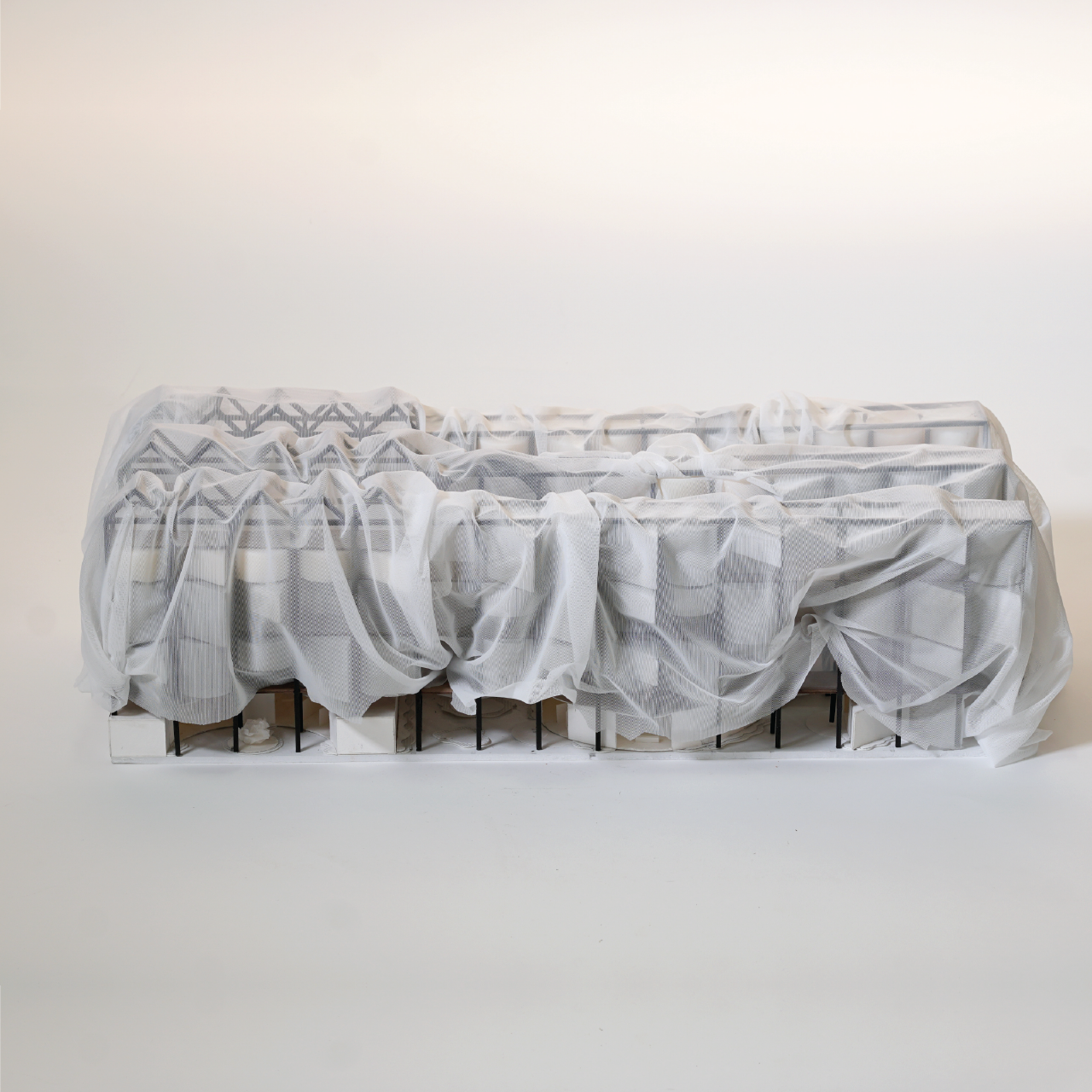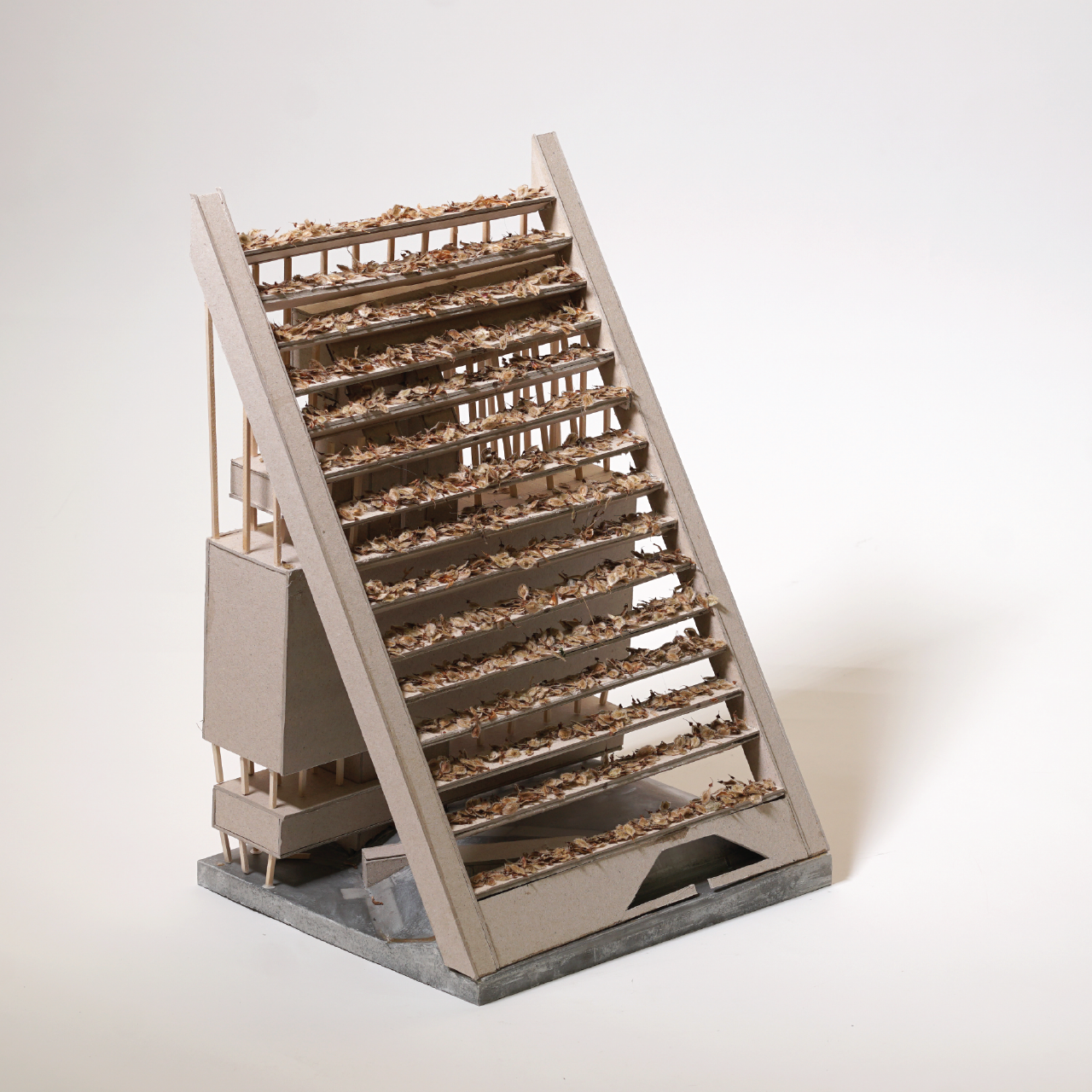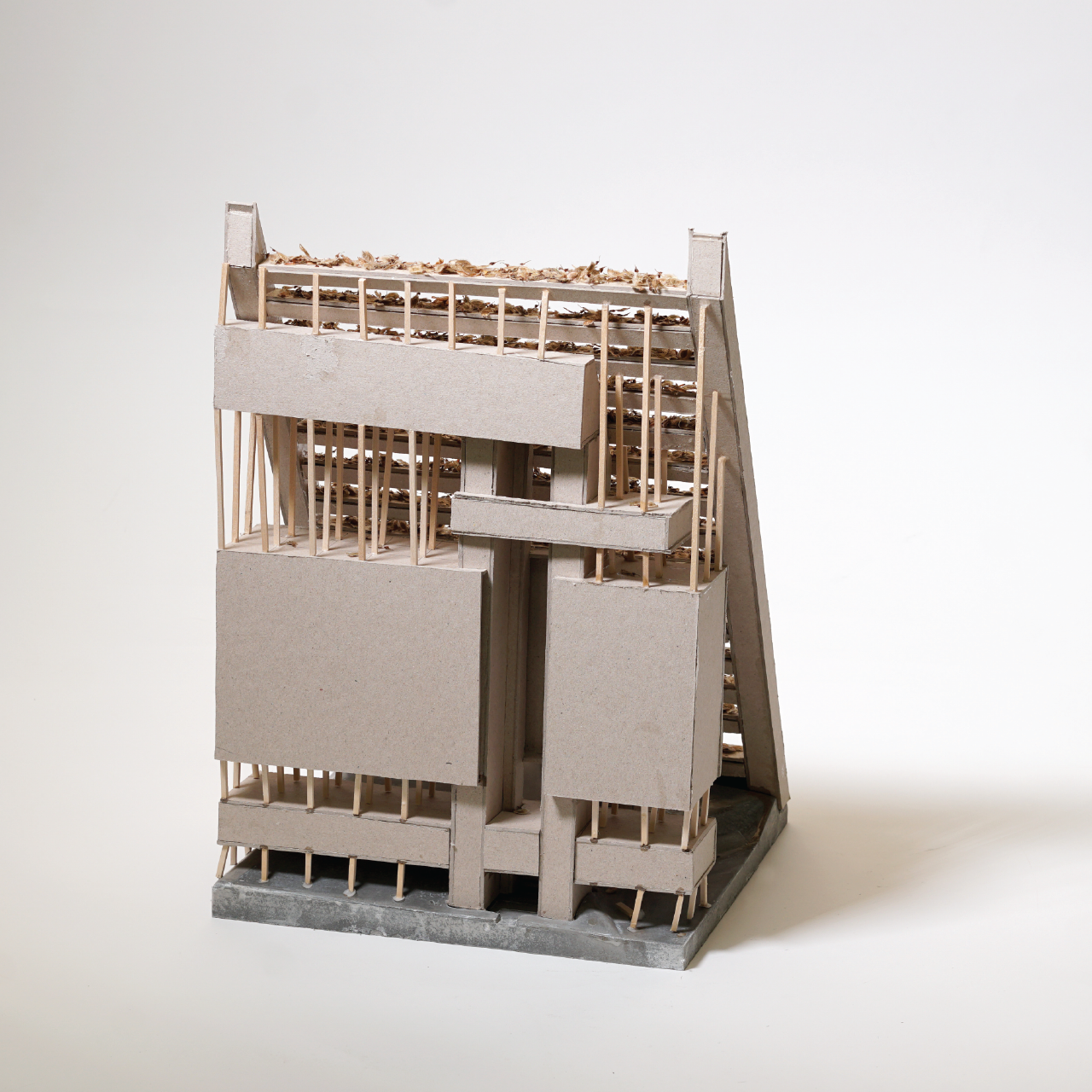Up There
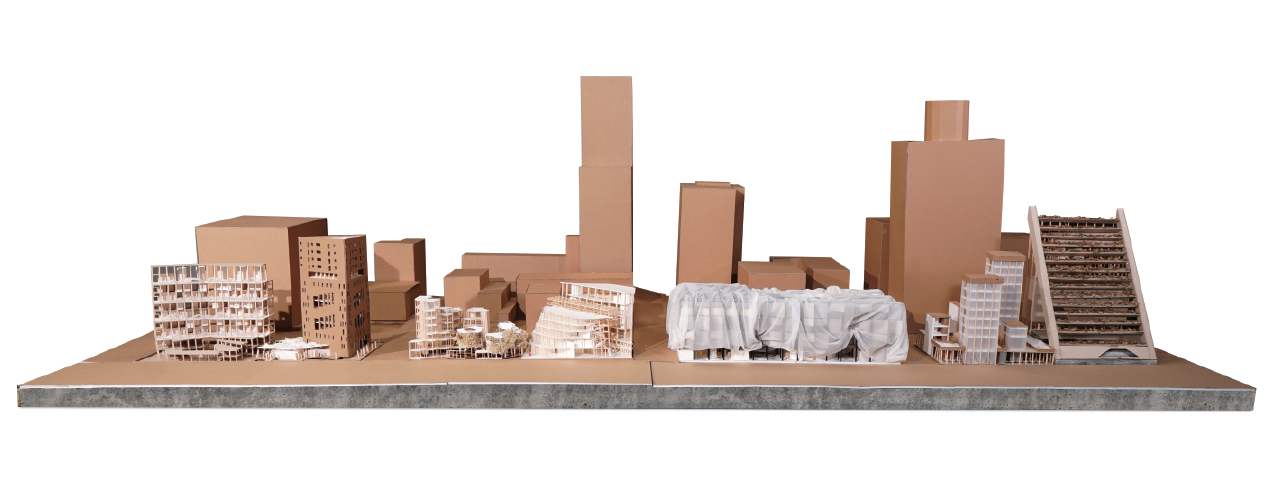
Up There Collective Model
Spring 2023, Instructor: Sergi Serrat School of Architecture and Interior Design
Most visions for the future of cities include some form of reconnection with nature. In general, there is the "Smart" model, focused on the intensive use of technology to improve the efficiency of different infrastructural layers and make them more environmentally friendly, and the "Green" model, which includes all of the above and adds decorative vegetal surfaces of all kinds, either horizontally or vertically.
However, any of these previous or future models forget to address the main quality that cities have always had until the arrival of the industrial revolution: they were rich in integrated productive models based on local networks. In fact, until the intensive use of carbon polluted cities in the worst way humanity has ever known, human settlements were self-sufficient hubs, capable of generating their own energy, food, and goods. On top of that, there was an intense symbiotic relationship with the environment, understanding and taking advantage of the metabolic and productive essence of nature in opposition to manmade structures.
The studio is based on the thesis that the city of the future cannot be discussed without (re)introducing local, slow, and integrated productive networks into the urban fabric. Living and working conditions must be compatible with spatial and social structures, keeping density high and mobility low.
We will challenge our traditional binary thinking, which separates man from nature, buildings from the landscape, and cities from the countryside. We will search for the compatibility limits between productive, residential, and recreational urban structures. We will investigate the benefits of a complex, vertical, multilayered city and explore an integrative path that blends urban efficiency with rural resilience in search of new domains for the uncertain future of post-urban developments.
The studio aims to complete the investigation started by the "Out There" graduate design studio during the fall of 2022. Then, the students proposed human-centered settlements built around productive programs found in the rural areas of Ohio. The goal was to define spaces and programs that could challenge the way humans live, work, and play together in the rural context of Akron and the abandoned rubber bowl stadium.
